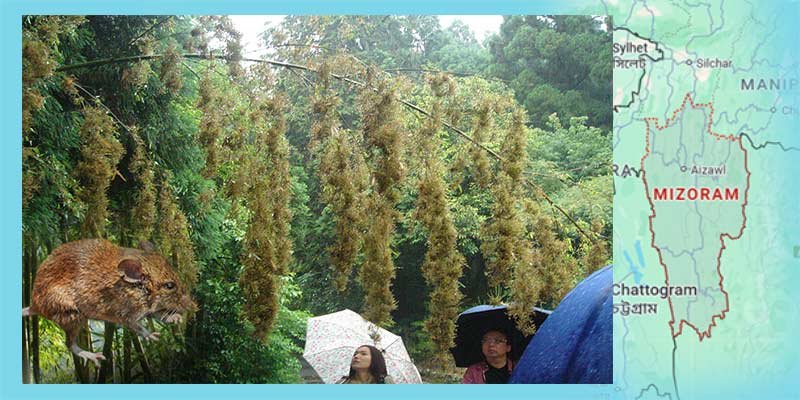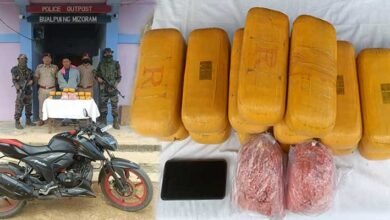Mizoram’s Rodent Crisis Hits 4,700 Families, Crops Lost
Triggered by the rare flowering of bamboo, Mizoram’s escalating rodent outbreak has devastated crops across all 11 districts, affecting thousands of families.

AIZAWL- In a crisis recalling the catastrophic Mautam famine of 1959, Mizoram is battling a sweeping rodent infestation that has engulfed all 11 districts, damaging crops and threatening food security for over 4,700 farming families.
Triggered by the rare mass flowering of the Rawthing bamboo (Bambusa tulda)—a cyclical event that occurs every 45–48 years—the outbreak, locally known as Thingtam, has devastated over 1,800 hectares of farmland across 150 villages. Officials report said, widespread losses in paddy, maize, and ginger crops, with estimated damages reaching tens of crores of rupees.
Districts including Aizawl, Champhai, Serchhip, Lunglei, and Mamit have been hit hardest, with monsoon rains and poor connectivity slowing relief efforts. “This cycle feels more vicious than before,” said a senior agriculture officer, citing rodents breaching fields, granaries, and homes.
Also Read- Suspected ULFA(I) Militant Killed in Intense Gunfight with Security Forces in Namsai
Authorities have intensified rodent control drives, distributing poisoned bait, fermented fish lures, and traps in collaboration with the Indian Council of Agricultural Research (ICAR). However, concerns are mounting over environmental contamination, with several families in Lunglei refusing government-issued poisons.
Public health officials warn that the crisis could trigger a surge in zoonotic diseases such as scrub typhus, Japanese Encephalitis, and rabies, transmitted via rodents and mites. A study in The Lancet Regional Health – Southeast Asia attributes nearly 36% of India’s zoonotic outbreaks (2018–2023) to the Northeast, with Mizoram emerging as a hotspot.
Also Read- Rahul Gandhi Pays Tribute to Zubeen Garg, Calls Him ‘The Kanchanjungha of Assam’
Authorities have urged citizens to maintain hygiene, avoid handling carcasses, and refrain from eating crabs or aquatic animals, as poisoned rodents may contaminate local waterways. “We can’t trace every dead rat—some end up in streams where crabs feed,” warned an official.
The Mizoram government has sought central assistance under the Disaster Management Act, 2005, and called for crop insurance relief. Long-term plans include rat-proof storage, crop diversification, and integration of One Health surveillance linking agriculture, veterinary, and public health departments.
Also Read- Violence Erupts Outside Baksa Jail as Fans Demand Justice for Zubeen Garg’s Death
For Mizoram’s largely agrarian population—70% dependent on farming, including 800 Jhum cultivators—the crisis rekindles fears of famine-like conditions. Zoologists and ICAR teams are now conducting field studies to monitor rodent population cycles and migration.
“This isn’t just Mizoram’s fight—it’s India’s climate warning,” said a senior agriculture official. “We need a united response that safeguards both crops and communities.”









